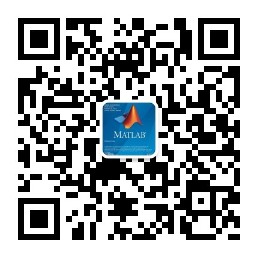博文
[转载]【计算机科学】【2018.08】土地覆盖与土地利用分类的深度学习研究
||
本文为英国兰开斯特大学兰开斯特环境中心(作者:Ce Zhang)的博士论文,共267页。
近年来,随着传感器技术的发展,人们每天都要采集大量非常精细空间分辨率(VFSR)的遥感图像。这些VFSR图像呈现了光谱和空间复杂的精细空间细节,对土地覆盖自动分类和土地利用分类提出了巨大挑战。深度学习重新点燃了人工智能对通用机器的追求,使之能够以自动化的方式执行任何与人类相关的任务。这在很大程度上是由深度机器学习中的兴起浪潮驱动的,该类方法通过分层特征表示对高层抽象进行建模,而无需人工设计特征或规则,显示了从VFSR图像识别和表征LC和LU模式的巨大潜力。
本文以深度卷积神经网络(CNN)为例,提出了一套新的用于LC和LU图像分类的深度学习方法。然而,在使用VFSR图像应用标准像素CNN进行LC和LU分类时遇到了一些困难,包括几何畸变、边界不确定性和巨大的计算冗余。利用基于规则的决策融合或粗糙集理论的不确定性建模,解决了LC分类面临的技术难题。针对土地利用问题,提出了一种基于目标的CNN方法,利用目标内部和目标之间的信息,对每个分割的目标(一组均匀像素)进行采样和预测。因此,LU分类的准确性和效率都很高。LC和LU在同一地理空间中形成一个层次本体,并通过它们的联合分布来建模,其中LC和LU通过迭代同时进行分类。这些开发的深度学习技术达到了LC和LU的最高分类精度,高达大约90%的准确度,比现有的深度学习方法高5%,比传统的基于像素和基于目标的方法高10%。该研究通过基于深度学习的创新在LC和LU分类中做出了重要贡献,在广泛的地理空间应用中具有巨大的潜在价值。
Recent advances in sensor technologies have witnessed a vastamount of very fine spatial resolution (VFSR) remotely sensed imagery beingcollected on a daily basis. These VFSR images present fine spatial details thatare spectrally and spatially complicated, thus posing huge challenges in automaticland cover (LC) and land use (LU) classification. Deep learning reignited thepursuit of artificial intelligence towards a general purpose machine to be ableto perform any human-related tasks in an automated fashion. This is largelydriven by the wave of excitement in deep machine learning to model thehigh-level abstractions through hierarchical feature representations withouthuman-designed features or rules, which demonstrates great potential inidentifying and characterising LC and LU patterns from VFSR imagery. In thisthesis, a set of novel deep learning methods are developed for LC and LU image classificationbased on the deep convolutional neural networks (CNN) as an example. Severaldifficulties, however, are encountered when trying to apply the standardpixelwise CNN for LC and LU classification using VFSR images, includinggeometric distortions, boundary uncertainties and huge computationalredundancy. These technical challenges for LC classification were solved eitherusing rule-based decision fusion or through uncertainty modelling using roughset theory. For land use, an object based CNN method was proposed, in whicheach segmented object (a group of homogeneous pixels) was sampled and predictedby CNN with both within-object and between-object information. LU was, thus,classified with high accuracy and efficiency. Both LC and LU formulate ahierarchical ontology at the same geographical space, and such representationsare modelled by their joint distribution, in which LC and LU are classifiedsimultaneously through iteration. These developed deep learning techniques achievedby far the highest classification accuracy for both LC and LU, up to around 90%accuracy, about 5% higher than the existing deep learning methods, and 10% greaterthan traditional pixel-based and object-based approaches. This research made a significantcontribution in LC and LU classification through deep learning based innovations,and has great potential utility in a wide range of geospatial applications.
1. 引言
2. 文献回顾
3. 用于高分辨率遥感图像分类的混合MLP-CNN分类器
4. 基于VPRS的高分辨率遥感图像CNN和MRF分类区域决策融合
5. 基于目标卷积神经网络的城市土地利用分类
6. 土地覆盖与土地利用分类的联合深度学习
7. 讨论与结论
更多精彩文章请关注公众号:
https://blog.sciencenet.cn/blog-69686-1220538.html
上一篇:[转载]【计算机科学】【2017.02】基于三维点云处理的文档与映射
下一篇:[转载]【信息技术】【2018.12】自主车辆的目标检测、分类与跟踪